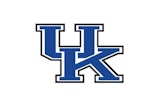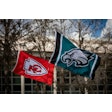![[Photo courtesy of McKinney ISD]](https://img.athleticbusiness.com/files/base/abmedia/all/image/2021/04/ab.streaming421_feat.png?auto=format%2Ccompress&q=70&w=400)
When the coronavirus pandemic struck more than a year ago, it was difficult to imagine the circumstances it would force on leaders in athletics, fitness and recreation. With facilities closed, seasons jeopardized and safety top of mind for all stakeholders, the industry had to quickly embrace new solutions.
Streaming video was one such solution.
"It was pretty clear to see even before the pandemic that streaming, especially at the high school sports level, was really on its way. It was really speeding up," says Chris Johnson, sports show product manager with Daktronics. "And just like anything, the pandemic accentuated that. It heightened the need for solutions."
![[Images courtesy of Musco Lighting]](https://img.athleticbusiness.com/files/base/abmedia/all/image/2021/04/ab.streaming421a.png?auto=format%2Ccompress&fit=max&q=70&w=400) [Images courtesy of Musco Lighting]
[Images courtesy of Musco Lighting]
Adapt, automate, overcome
When the pandemic caused chaos, what followed was a period of adaptation.
"As soon as March and April rolled around, it completely changed the structure of high school sports," says Johnson, "We're still in it. Just being able to adapt from that, every school had to figure something out."
Streaming became a key part of the strategy for high school athletics. Even in situations where games were allowed to continue, fan access was very likely to have been capped.
That was the situation for the McKinney (Texas) Independent School District, which serves more than 25,000 students and 5,000 student-athletes. Three high schools in the district share its 12,000-seat football stadium, but during the COVID-impacted football season, only 3,250 tickets were sold per game.
According to McKinney athletic director Jennifer Frazier, the pandemic prompted the University Interscholastic League to allow livestreamed video of high school football for the first time. The district took advantage, working with lighting partner Musco Lighting to implement its MuscoVision product at the stadium.
"We felt like it was a great working relationship and so we decided to venture over into the livestreaming aspect of it," Frazier says. "It's been really well received. We had quite a bit of online viewing throughout the fall as COVID took place."
McKinney viewers were in good company. According to Mark Koski, vice president of the NFHS Network — a streaming platform with the goal of broadcasting all of the estimated two million high school games and contests that occur annually — subscriber numbers skyrocketed during the pandemic. By the end of the school year, live events taking place at more than 10,000 high schools — more than half of the NFHS membership — will have been carried on the network. Leveraging a partnership with automated sports production provider Pixellot, the number of events individual schools were covering grew, as well. "Schools that have the Pixellot cameras went from covering 30 games on average to covering 130," says Koski. "Because now we cover freshman games, JV and all the varsity games."
Pixellot's solution automates the process, applying artificial intelligence to track the action of a particular sport taking place on a field or court — panning and zooming without any human supervision.
"Once a system is installed at a school, we can produce every single game that takes place on that court," says Pixellot president David Shapiro. "Whether it's a JV game, a freshman game, a varsity game, a scrimmage — and all that can be controlled remotely. Nobody has to be on-site to turn anything on, to do anything. Once it's set up you can forget about it for several years."
Automation is key for those looking to finally make the live streaming leap. Says Koski, "Athletic directors have 100 things going on on game day, and the last thing they want to be thinking about is how they can provide content to an outside fan."
Matt Ellenberger, marketing development manager for Musco Lighting, agrees, adding that MuscoVision's automated sports production technology is particularly helpful in the parks and recreation environment during events such as youth sports tournaments.
"By visiting tournaments and watching tournament play, we figured out customers couldn't schedule broadcasts fast enough: 'The team on Field 2 needs to go to Field 5,' " Ellenberger says. "They're busy dealing with the tournament. They couldn't deal with going to the control system and changing the schedule. It's just not practical in that environment."
According to Ellenberger, MuscoVision is capable of determining whether activity taking place on a field is actually a game, versus warmups, maintenance or anything else. "Part of the automation is that we have a camera set up, and it's looking at where the objects are," he says. "An object can be a person, a ref, a ball, a goal — it could be anything — and we're tracking what's going on with that, and then making decisions based on that information."
Bringing it home
While streaming video may not replicate the in-person experience, some providers are doing their best.
"If you really think about the difference between a traditional sports broadcast that you see at home versus the content you see in the stadium, there's a big difference," says Daktronics high school and park and rec market manager Kyle Sydow. "In the stadium, they're trying to get you excited, trying to get you on your feet, trying to make you interact. We wanted to see how we could bring that interaction home."
Sydow says that the pandemic led Daktronics to develop a product called Big Stream, which leverages the company's video board products to make a streaming broadcast feel a bit more like being in the stadium. "Big Stream is us trying to figure out how we can help schools provide the same experience and keep communities together," he says. "Communities surround high school sports as a rallying point, a feel-good thing, and it was hard for us to hear people talk about missing out on all the cool things they like about the video board."
According to Sydow, many Big Stream customers will use the product to help them stream to social media platforms, or their own websites. Lowering the bar for access can help a high school maintain — and perhaps even grow — their community of local fans.
"To go to a local sporting event, it takes dedication to want to be there. To watch a game at home takes less dedication," Sydow says. "By expanding their coverage, by expanding the reach that they have, it allows schools to grasp more fans — to get more people interested in what they're doing and getting excited about the success they're having."
Meanwhile, the NFHS Network has set up its own platform for capturing viewers. Subscribers to the network pay a monthly fee, which allows them access to all of the content available on the platform — including archival content dating back to the network's 2013 founding. "It makes it a great and fun experience, not only for the parent and the fan, but any casual fan who loves high school sports has the ability to go and watch all of those games," Koski says.
MuscoVision — which offers single-, three-, seven- or 30-day packages — also provides fans with platform-wide access. Says Ellenberger, "If you're watching a game in Palm City, Fla., where I live, or you want to watch a game in Europe somewhere, then you can watch either one of those as long as you have an active subscription pass."
![[Photo courtesy of McKinney ISD]](https://img.athleticbusiness.com/files/base/abmedia/all/image/2021/04/ab.streaming421b.png?auto=format%2Ccompress&fit=max&q=70&w=400) [Photo courtesy of McKinney ISD]
[Photo courtesy of McKinney ISD]
Monetization
Each approach offers end-users a chance at monetization — or at least the opportunity to recapture revenue that might otherwise have been lost.
"We know that a lot of schools sell sponsorships in their venues, especially when they have video boards," says Daktronics' Sydow. "What were schools going to tell their sponsors this year when they weren't going to be able to have fans, or fans were going to be extremely reduced?
"A lot of schools actually used Big Stream to promote their sponsors that typically would be in-venue. So, I think more than making a return of new revenue, schools were using it to keep their existing revenue and not go in the hole."
McKinney ISD's Frazier notes that while her district's streaming decision wasn't based on generating revenue, she sees the potential. "Our focus was on just making sure that we could provide a platform," she says, adding, "It has been a small revenue generator for us, but it's been very incremental. I think it has the ability to be a generator for customers."
"We have heard a lot of commentary about recapturing lost revenue for budgets, so I think that's a piece of it," Ellenberger says. "How do they recapture that in the time period that games are starting, but people can't show up? They don't buy concessions, they're not buying tickets — all of those types of things. This is another way for them to generate revenue during that lost period."
While the pandemic accelerated the adoption of video as a means of engaging fans with high school and youth sports, and may prove an important piece of the puzzle moving forward, Koski looks to turning the page.
"We're so excited that things are starting to come back, to fill up those stadiums, because we believe that high school athletics are an extension of the classroom," he says. "It's very important to us, for our state associations and schools, that fans get back in the stands as quickly as possible."
Forward-looking fitnessWhile video is making inroads in the sports market with automated technology, the fitness industry already provided a strong foothold for video platforms even prior to the pandemic, according to Tamara Ceman, marketing lead for video monetization platform Uscreen. "The pandemic has definitely accelerated some things," Ceman says. "But luckily we didn't have to shift much in regards to targeting or content creation. Health, fitness and yoga have been one of the bigger customer groups since the inception of Uscreen in 2015, so we naturally created a lot of educational content with them in mind." Ceman points out that many health clubs and fitness centers integrated video streaming as a key part of their business model to stay afloat during the tumult of the past year. "In 2020, video streaming played a pivotal role in the survival of many fitness and health clubs, and for some, streaming became their primary or only revenue stream," she says. "A good number of our health, fitness and sports customers initially saw streaming as a band-aid solution, but soon came to realize that video streaming is here to stay." Paddy McGill, partner and affiliate program manager with Restream, suggests that the pandemic has solidified streaming as a way of life. "This is the new normal," McGill says, adding, "I think this has been the big moment that live streaming has needed. It's been adopted across areas that maybe a long time ago wouldn't be done." Adam Zeitsiff, president and CEO of livestreaming and digital technology platform Intelivideo, imagines that moving forward, gymgoers will expect some kind of hybrid offering from the facilities they patronize. "We have sports and fitness customers around the world using our platform to extend the reach of their brick-and-mortar services, and we're helping them pivot their businesses to align with the permanent change in consumer behavior," Zeitsiff says. "As a result of the global pandemic, fitness and sports customers want to engage with brands in a truly hybrid fashion — including inside the four walls of their facilities, at home and also when they are on the go." |
This article originally appeared in the April 2021 issue of Athletic Business with the title "Streaming sports helps high schools sustain community, build business." Athletic Business is a free magazine for professionals in the athletic, fitness and recreation industry. Click here to subscribe.





































